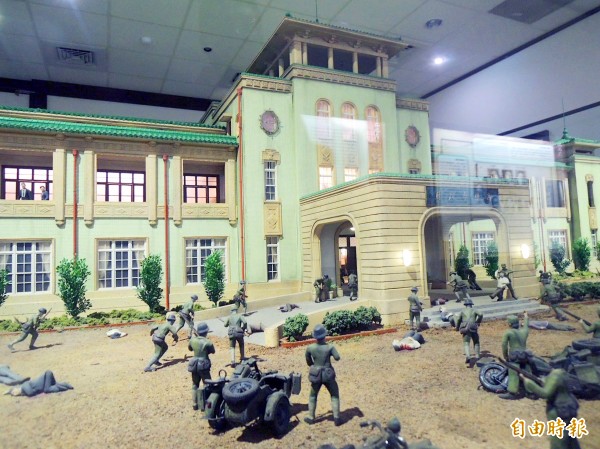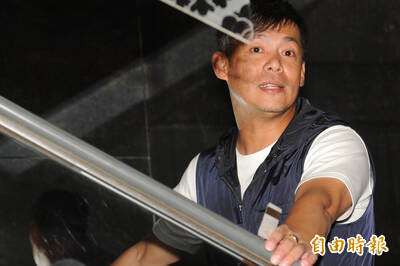《TAIPEI TIMES》 Building’s bullet marks testify of 228 Massacre

A diorama of events during the 228 Incident is displayed at the Kaohsiung Museum of History on Sunday. Photo: Wang Jung-hsiang
By Wang Jung-hsiang and William Hetherington / Staff reporter, with staff writer
Patches on one of the Kaohsiung Museum of History’s external walls are evidence that the military opened fire on civilians during the 228 Incident, museum officials said.
The museum, built in 1939 in the city’s Yancheng District (鹽埕), is located in the former Japanese colonial-era municipal office. After the arrival of the Chinese Nationalist Party (KMT), the site served as the Kaohsiung City Government building, before being converted to a museum on Oct. 25, 1998. The building has been given historical heritage status by the city.
The 228 Incident began in Taipei on Feb. 27, 1947, when Tobacco Monopoly Bureau agents confiscated contraband cigarettes from a woman outside Tianma Tea House (天馬茶房) on Taipei’s Nanjing W Road. A crowd surrounded the agents after one of them hit the woman on the head with a gun, after which the agents fired into the crowd, killing a bystander. Anti-government protests erupted the following day and spread to Kaohsiung by March 3.
City officials and members of civic organizations at the time formed a task force to discuss how to handle the issue and restore public order. On March 6, the group approached military forces stationed in the Shoushan area (壽山) in the city’s Gushan District (鼓山) in an attempt to discuss the issue with them and keep them from advancing on the protesters, but the group’s members were arrested and several were shot dead on the spot.
The museum said researchers have learned that Peng Meng-chi (彭孟緝), a major general at the Kaohsiung garrison, suspected that the city government officials in the task force were being manipulated by the Chinese Communist Party and had already planned to handle them with military force.
After arresting the group, he took the opportunity to dispatch troops to advance on protesters near the city government building, Kaohsiung Railway Station and Kaohsiung Municipal Kaohsiung Senior High School, the museum said, adding that it was the first deployment of the military against protesters during the Incident nationwide.
The military killed indiscriminately, of which plastered-over bullet holes in walls throughout the city served as evidence, but most of the buildings have since been renovated or rebuilt, the museum said.
The museum is one of a few remaining places where one can still see evidence of the shooting, the it said, adding that while the holes have long since been filled in, the different color of the plaster makes it easy to see where the bullets struck.
The KMT government early on replaced the building’s bricks, but because the outer wall in front of the main entrance is not made out of brick, it could only be repaired with plaster, the museum said.
A display at the museum describes the source of the bullet holes to visitors, it said, adding that it is considering an creating an outdoors installation, pending discussion with the city’s Bureau of Cultural Affairs.
“Many people have a hard time believing that so many plaster marks are from bullets,” the museum said. “Part of the repair was for cosmetic reasons, part was to cover up the incident, but the scars of history cannot be covered up.”
新聞來源:TAIPEI TIMES
















